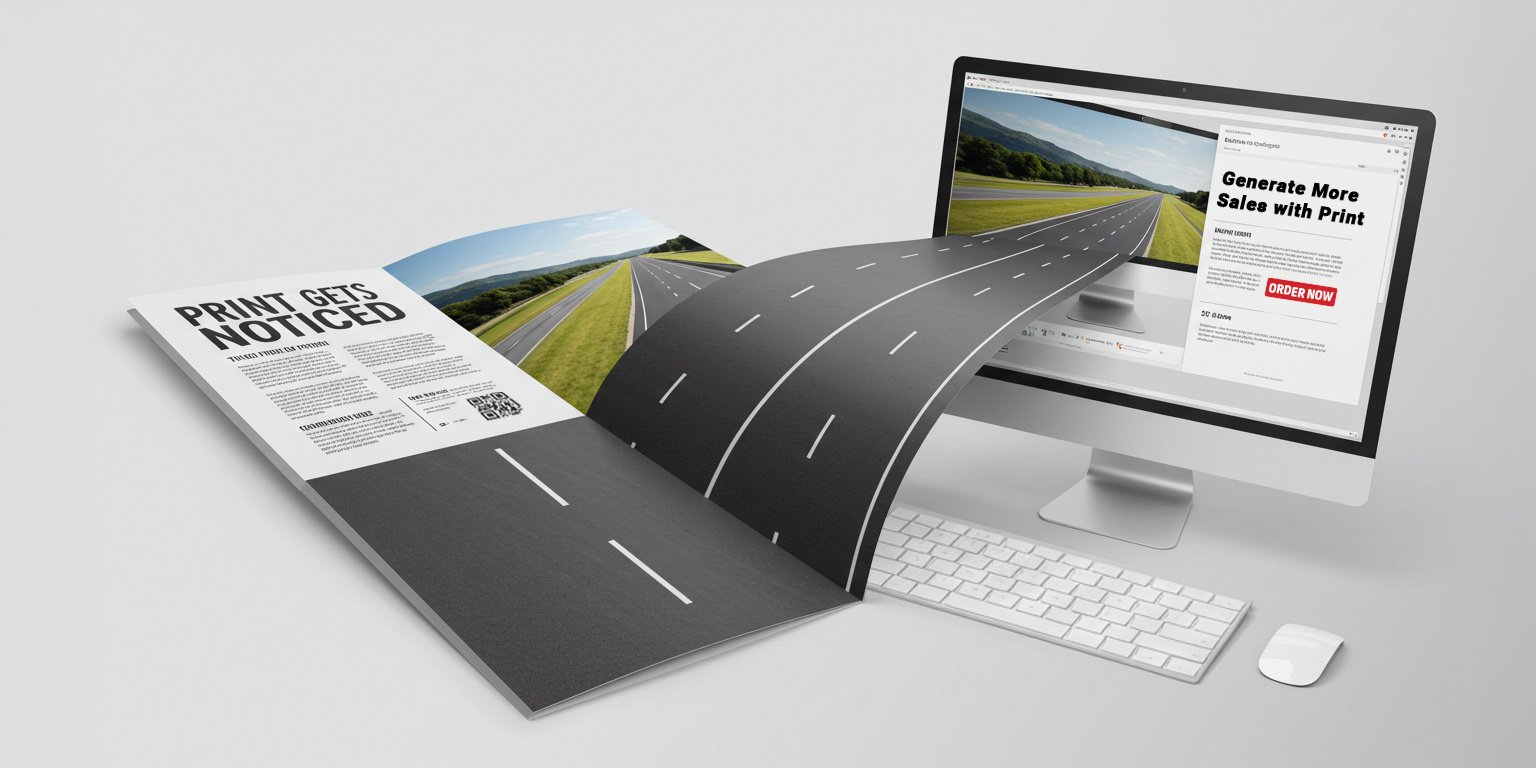How Personalized Print Marketing Works: Variable Data Printing Guide

Personalized print marketing is changing the way businesses approach their print strategies.
See the difference personalization makes?


Personalized print marketing is a powerhouse for customer acquisition and retention. In fact, nearly 90% of businesses achieved higher conversion rates and customer satisfaction scores after implementing a personalized strategy.
If your business hasn’t yet tapped into the power of personalized print marketing, now is the time to explore this fascinating opportunity to deploy print technology.
And it’s easier than you might think. There’s no need to invest in new tech, hire specialists, or expand your team. All you need is a clear understanding of your audience, and your digital printing partner can handle the rest.
Ready to get personal? Here’s everything you need to know to get started.
- What is variable data printing?
- How variable data printing is used to create personalized print campaigns.
- Examples of personalized print marketing.
What is Variable Data Printing?
Personalized print marketing is powered by a digital printing technology called variable data printing.
Variable data printing allows for the personalization of print materials on a piece-by-piece basis. This means the text, graphics, and images can change from one printed piece to the next in a single print run.
Variable data printing can be used on nearly any type of print marketing collateral, including flyers, brochures, direct mailers, packaging, and more.
The word variable in variable data printing refers to the data points that will be personalized.
These variables are typically sourced from a customer database and include a range of attributes such as:
- Personal Details: Names, addresses, birthdays, or membership information.
- Behavioral Data: Previous purchases or attendance at events, response to previous marketing campaigns, or time spent on specific website pages.
- Personal Preferences: Features of interest, language, or color preferences.
How Variable Data Printing is Used to Create Personalized Print Campaigns
Let’s illustrate how variable data printing is used to personalize print.
We’ll use a 6” x 9” direct mail postcard as an example.
Step 1: Create the Design Template
The first step is to create a design template. Before designing the template, determine which parts of the messaging will be personalized.
For elements of the design that will be personalized, simply use placeholders or fields where the variable data will be inserted during the printing process. Here’s an example of how placeholders work.

Remember, variable data printing can be used for nearly any design element. Though many people think that personalized printing is limited to just the first name, nearly everything can be personalized, including images, colors, offers, discounts, QR codes, URLs, and text can be personalized. The more you can personalize in print, the better.
Step 2: Map the Variable Data
Once the template is complete, it’s time to connect the message placeholders to a corresponding data point that you want to personalize.
This process, known as data mapping, automatically ensures that each printed piece retrieves the right data from the database for each recipient. For example, a placeholder for a recipient's name in the template would be linked to the 'Name' field in your CRM.
Don’t worry–your printing partner will handle all of this. However, you will need to provide the data. If you’re marketing to existing customers or prospects who have previously interacted with your business or organization, you can personalize print materials using data from your CRM (such as personal details, past engagement, or purchase history.)
Here’s how the design template for a higher education print campaign would look for two different prospective students after mapping the variable data.
The first is for a prospective student named Joe, who expressed interest in the School of Business through a form fill on the university’s website.

The second is for a prospective student named Rick, who expressed interest in the School of Music at a recent college fair at his high school.
.jpg?width=1350&height=900&name=artisan-colour-web-variable-data-printing-university4%20(1).jpg)
If you don’t have data for individual recipients, you can still leverage the power of variable data printing by personalizing print campaigns for different audience segments.
This strategy is frequently used by real estate agents who personalize direct mail campaigns for local lead generation with text and images that reflect the distinct characteristics of each community they serve.

The B2B sector uses a similar personalized print strategy for sales enablement tools.
For example, a software company specializing in human resources management systems can tailor its print marketing materials differently based on the industry targets.
For the healthcare industry, the material would emphasize features like staff scheduling, compliance tracking, and secure employee data management. Conversely, for the retail industry, the content would highlight the software's capabilities in managing seasonal workforce demands, improving employee engagement, and streamlining the recruitment process.
Step 3: Print and Distribute
Once the template has been created and data has been mapped, it’s time to print.
The advanced capabilities of variable data printing technology mean that even with high levels of customization, the printing speed remains unaffected.
This is because modern digital printing technology allows for the dynamic insertion of personalized data into each piece as it’s being printed, which streamlines the workflow and eliminates the need for multiple print runs.
In other words, it takes the same time to print 100,000 personalized pieces as it does to print 100,000 generic pieces.
Examples of Personalized Print Marketing
The flexibility and impact of personalized print marketing have benefits for every industry.
Here are just a few examples of how it can be used.
Retail Industry
Nicolas Krauss, founder and CEO of socially conscientious clothing line dasFlow, shared how they leveraged variable data printing to create personalized direct mail campaigns targeting their fitness enthusiast customer base.
“We personalized elements such as the recipient's name, their preferred fitness activities, and local gym partnerships to offer exclusive apparel deals. For instance, a mail piece sent to a yoga enthusiast featured their name, images of yoga apparel, and a discount code for yoga wear, along with information about yoga classes at a nearby studio we partnered with. The campaign resulted in a 25% increase in redemption rates of the offers sent out.”
Education Industry
Ryan Esco, CMO of FireRock Marketing, shared how personalized print marketing increased event attendance for one of their clients. “We tailored a campaign for a private school seeking to boost its open house attendance. Using variable data printing, we created personalized invitations for prospective students and their families, incorporating the students' names into a mock classroom setting photo. We also customized each invitation with a QR code linked to a personalized landing page where the invitee could find more details about the curriculum relevant to their interests. This approach led to a record high attendance at the open house and a 20% rise in enrollment inquiries compared to previous years.”
FinTech
Haiko de Poel, owner of Mass Impact, shared how he used variable data printing in the financial tech sector. “We created a series of personalized brochures tailored to each recipient's specific financial behaviors and preferences, which were extrapolated from a blend of demographic data and past interactions with our digital platforms. For instance, if someone identified themselves as a frequent traveler, they received a brochure highlighting the benefits of the currency exchange features and global spending alerts, along with imagery of destinations relevant to their recent travels. This level of customization not only got their attention but also demonstrated a deep understanding of their lifestyle and needs. This personalized print campaign resulted in a 40% increase in application downloads.”
Other examples include:
- Healthcare providers can send personalized appointment reminders and health tips based on the patient's medical history.
- Car dealerships can customize service reminders and promotions for accessories or upgrades based on the specific make and model of the customer’s vehicle.
- Hotels can send personalized welcome messages and itineraries to guests based on their preferences and past stays, enhancing the guest experience.
- Nonprofit organizations can personalize their fundraising letters with details about how the donor’s past contributions have impacted the organization, encouraging further donations.
Ready to add personalized print to your print marketing strategy? We're here to help ensure it's a success.
At Artisan Colour, we specialize in personalized print marketing solutions that build brands and boost revenue. Since 1998, our commitment to quality and innovation has earned the trust of businesses across the nation–and we’re ready to earn your trust, too.
Our team is here for all of your business printing needs, including:
- Print Services: Marketing collateral, catalogs, branded packaging, vehicle wraps, personalized printing, and specialty printing.
- Signage and Branding: Business signage, wall and window graphics, indoor and outdoor banners, trade shows and events, retail displays, and wall wraps.
- Direct Mail Marketing: Direct mail campaigns, personalized direct mail, mailing lists, Informed Delivery, and web to mailbox.
- Marketing Fulfillment: Web-to-print, warehousing and storage, inventory management, kitting and assembly, and promotional products.
- Digital Services: Prepress, premedia, online image libraries, photography, graphic design, image retouching, and color management.
- Digital Marketing: Digital marketing strategy, graphic design, website design, content marketing, SEO, social media, software integrations, and Hubspot ecosystem management.
Contact our team of experts today to learn more about personalized print marketing.
Editor's Note: This blog was originally published in November 2022, but has been updated with relevant information.






